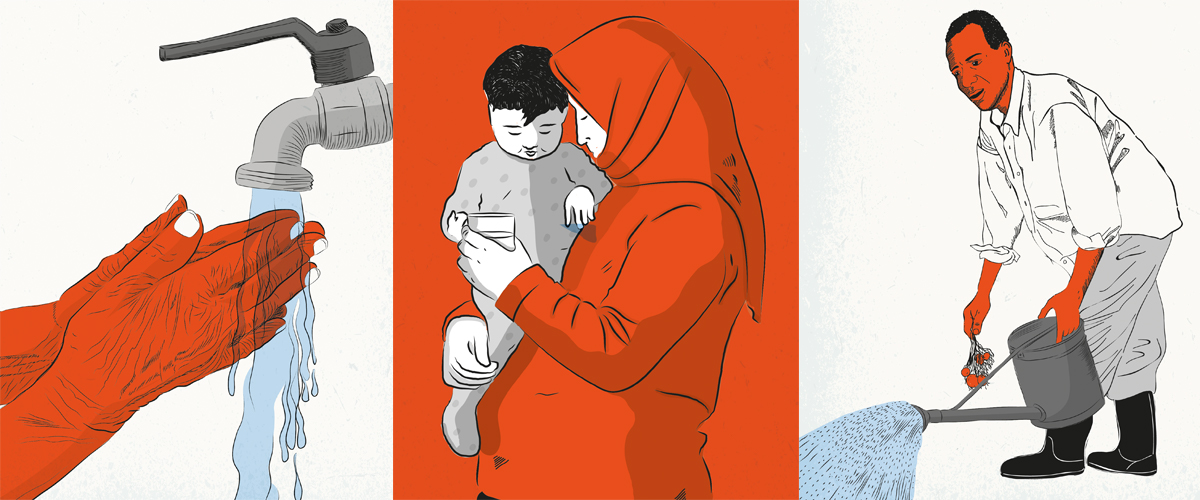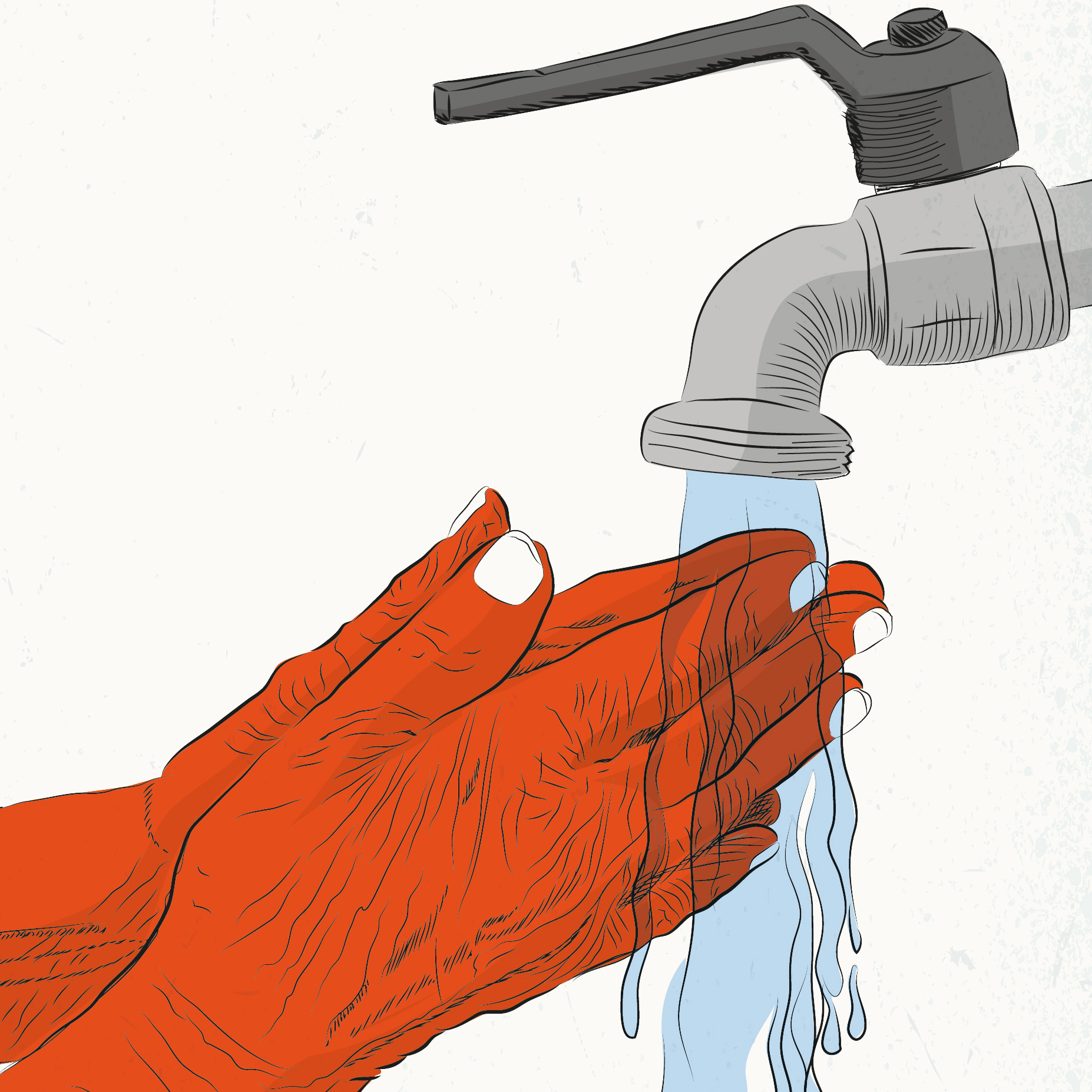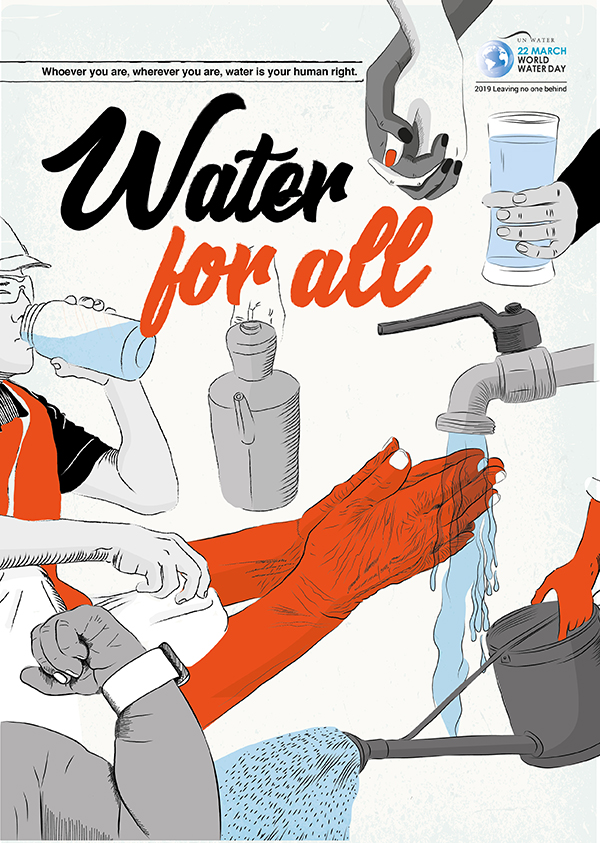

“Our bodies, our cities and our industries, our agriculture and our ecosystems all depend on it. Water is a human right. Nobody should be denied access.” — UN Secretary-General António Guterres
Water is an essential building block of life. It is more than just essential to quench thirst or protect health; water is vital for creating jobs and supporting economic, social, and human development.
2019 Theme: Leaving no one behind
The theme for World Water Day 2019 is ‘Leaving no one behind,’ which is the central promise of the 2030 Agenda for Sustainable Development: as sustainable development progresses, everyone must benefit.
Sustainable Development Goal 6 (SDG 6) aims to ensure availability and sustainable management of water for all by 2030. By definition, this means leaving no one behind.
Today, billions of people are still living without safe water, which means ‘safely managed drinking water service’: water that is accessible on the premises, available when needed, and free from contamination. Their households, schools, workplaces, farms and factories struggling to survive and thrive.
Marginalized groups – women, children, refugees, indigenous peoples, disabled people and many others – are often overlooked, and sometimes face discrimination, as they try to access and manage the safe water they need.
Water, a human right
In 2010, the UN recognized “the right to safe and clean drinking water and sanitation as a human right that is essential for the full enjoyment of life and all human rights.”
The human right to water entitles everyone, without discrimination, to sufficient, safe, acceptable, physically accessible and affordable water for personal and domestic use; which includes water for drinking, personal sanitation, washing of clothes, food preparation, and personal and household hygiene.
People are left behind without safe water for many different reasons. The following are some of the ‘grounds for discrimination’ that cause certain people to be particularly disadvantaged when it comes to accessing water:
- Sex and gender
- Race, ethnicity, religion, birth, caste, language, and nationality
- Disability, age and health status
- Property, tenure, residence, economic and social status
- Other factors, such as environmental degradation, climate change, population growth, conflict, forced displacement and migration flows can also disproportionately affect marginalized groups through impacts on water.
To ‘leave no one behind’, we must focus our efforts towards including people who have been marginalized or ignored. Water services must meet the needs of marginalized groups and their voices must be heard in decision-making processes. Regulatory and legal frameworks must recognise the right to water for all people, and sufficient funding must be fairly and effectively targeted at those who need it most.
World Water Day is coordinated by UN-Water – the UN’s inter-agency collaboration mechanism for all freshwater related issues - in collaboration with governments and partners.

Facts & Figures
- 2.1 billion people live without safe water at home.
- One in four primary schools have no drinking water service, with pupils using unprotected sources or going thirsty.
- More than 700 children under five years of age die every day from diarrhoea linked to unsafe water and poor sanitation.
- Globally, 80% of the people who have to use unsafe and unprotected water sources live in rural areas.
- Women and girls are responsible for water collection in eight out of ten households with water off-premises.
- For the 68.5 million people who have been forced to flee their homes, accessing safe water services is highly problematic.
- Around 159 million people collect their drinking water from surface water, such as ponds and streams.
- Around 4 billion people – nearly two-thirds of the world’s population – experience severe water scarcity during at least one month of the year.
- Over 800 women die every day from complications in pregnancy and childbirth.
- 700 million people worldwide could be displaced by intense water scarcity by 2030.

